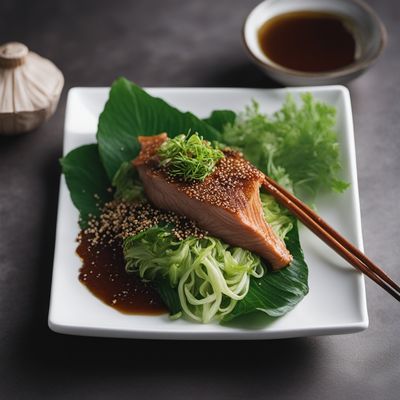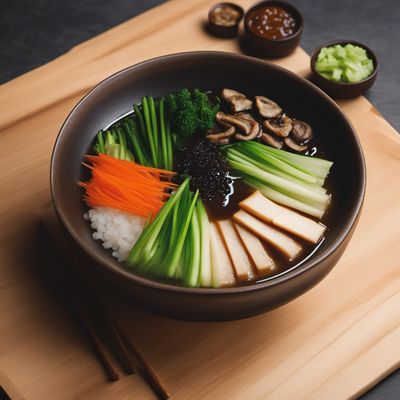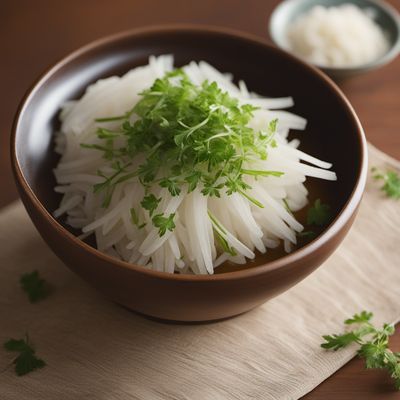
Recipe
Molecular Sushi
Sushi Reimagined: A Molecular Gastronomy Twist
4.8 out of 5
Molecular gastronomy is a cuisine that focuses on the scientific aspects of cooking, using innovative techniques and ingredients to create unique and unexpected dishes. In this recipe, we will be adapting the traditional Japanese dish of sushi to the molecular gastronomy style, resulting in a visually stunning and deliciously modern take on a classic.
Metadata
Preparation time
60 minutes
Cooking time
25 minutes
Total time
85 minutes
Yields
2 servings
Preparation difficulty
Hard
Suitable for
Pescatarian, Gluten-free, Dairy-free, Low-fat, Low-carb
Allergens
Fish
Not suitable for
Vegan, Vegetarian, Paleo, Keto, High-fat
Ingredients
This recipe takes the traditional sushi ingredients and transforms them into a new form, using techniques such as spherification and foaming to create a unique texture and presentation. The flavors and ingredients remain true to the original, but the presentation and texture are reimagined. We alse have the original recipe for Sushi, so you can check it out.
-
200g (7oz) sushi rice 200g (7oz) sushi rice
-
250ml (1 cup) water 250ml (1 cup) water
-
1 tbsp rice vinegar 1 tbsp rice vinegar
-
1 tbsp sugar 1 tbsp sugar
-
1 tsp salt 1 tsp salt
-
100g (3.5oz) salmon, thinly sliced 100g (3.5oz) salmon, thinly sliced
-
100g (3.5oz) tuna, thinly sliced 100g (3.5oz) tuna, thinly sliced
-
50g (1.75oz) cucumber, thinly sliced 50g (1.75oz) cucumber, thinly sliced
-
50g (1.75oz) avocado, thinly sliced 50g (1.75oz) avocado, thinly sliced
-
10g (0.35oz) wasabi 10g (0.35oz) wasabi
-
10g (0.35oz) pickled ginger 10g (0.35oz) pickled ginger
-
5g (0.18oz) sesame seeds 5g (0.18oz) sesame seeds
-
5g (0.18oz) soy sauce 5g (0.18oz) soy sauce
-
5g (0.18oz) agar agar powder 5g (0.18oz) agar agar powder
-
500ml (2 cups) water 500ml (2 cups) water
-
5g (0.18oz) sodium alginate 5g (0.18oz) sodium alginate
-
500ml (2 cups) water 500ml (2 cups) water
-
5g (0.18oz) calcium chloride 5g (0.18oz) calcium chloride
Nutrition
- Calories: 350 kcal / 1465 KJ
- Fat: 6g (1g saturated)
- Carbohydrates: 60g (5g sugars)
- Protein: 15g
- Fiber: 2g
- Salt: 2g
Preparation
-
1.Rinse the sushi rice in cold water until the water runs clear. Combine the rice and 250ml (1 cup) of water in a pot and bring to a boil. Reduce the heat to low, cover, and simmer for 18 minutes. Remove from heat and let sit for 10 minutes.
-
2.In a small saucepan, combine the rice vinegar, sugar, and salt. Heat over low heat until the sugar dissolves. Pour the mixture over the cooked rice and stir to combine.
-
3.Cut the salmon, tuna, cucumber, and avocado into small cubes and set aside.
-
4.In a small bowl, mix the wasabi and soy sauce together.
-
5.In a medium saucepan, combine the agar agar powder and 500ml (2 cups) of water. Bring to a boil, stirring constantly, and then reduce the heat to low and simmer for 5 minutes.
-
6.Pour the agar agar mixture into a shallow dish and let it cool and set for 10 minutes. Once set, cut the agar agar into small cubes.
-
7.In a large bowl, combine the sodium alginate and 500ml (2 cups) of water. Use an immersion blender to blend the mixture until it becomes foamy.
-
8.In a separate bowl, combine the calcium chloride and 500ml (2 cups) of water.
-
9.Using a spoon, drop small spoonfuls of the salmon, tuna, cucumber, avocado, wasabi soy sauce, agar agar cubes, and sesame seeds into the foamy sodium alginate mixture. Use a slotted spoon to remove the spheres from the mixture and transfer them to the calcium chloride bath. Let them sit in the bath for 2-3 minutes.
-
10.Remove the spheres from the calcium chloride bath and rinse them in cold water.
-
11.Serve the sushi spheres on a plate with pickled ginger and additional wasabi soy sauce for dipping.
Treat your ingredients with care...
- Agar agar powder — Make sure to stir constantly when boiling to prevent clumping.
- Sodium alginate — Use an immersion blender to ensure a foamy texture.
- Calcium chloride — Use a separate bowl for this mixture to prevent the sodium alginate from reacting too quickly.
Tips & Tricks
- Use a slotted spoon to remove the spheres from the sodium alginate mixture to prevent excess liquid from transferring to the calcium chloride bath.
- Experiment with different flavors and ingredients to create your own unique sushi spheres.
- Serve the spheres on a bed of seaweed for an added touch of authenticity.
Serving advice
Serve the sushi spheres on a plate with pickled ginger and additional wasabi soy sauce for dipping.
Presentation advice
Arrange the sushi spheres in a visually appealing way on the plate, using different colors and textures to create contrast.
More recipes...
For Sushi » Browse all
For Japanese cuisine » Browse all
For Molecular gastronomy » Browse all

Molecular Gastronomy Mushroom Fritters
Whimsical Mushroom Fritters: A Molecular Gastronomy Delight
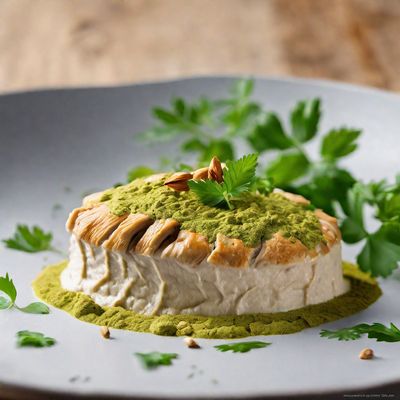
Murgh Malai - Molecular Gastronomy Style
Whipped Chicken Delight: A Molecular Twist on Murgh Malai
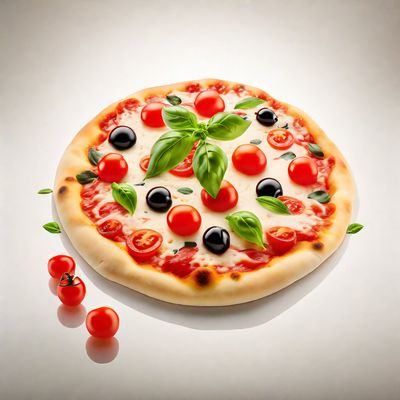
Molecular Gastronomy Pizza Margherita
The Futuristic Twist on a Classic: Molecular Gastronomy Pizza Margherita
More Japanese cuisine dishes » Browse all
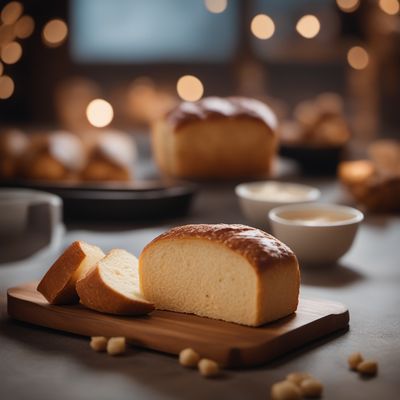
Takaku Bread
Takaku bread is a type of Japanese bread that is made with sweet potatoes. It has a soft texture and a slightly sweet flavor.
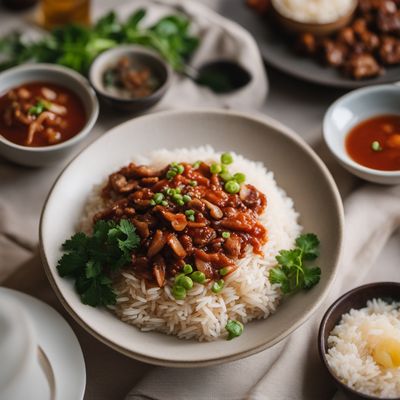
Hayashi Rice
Hayashi Rice is a popular Japanese dish that is made with beef, onions, mushrooms, and a tomato-based sauce. It is typically served over rice and...
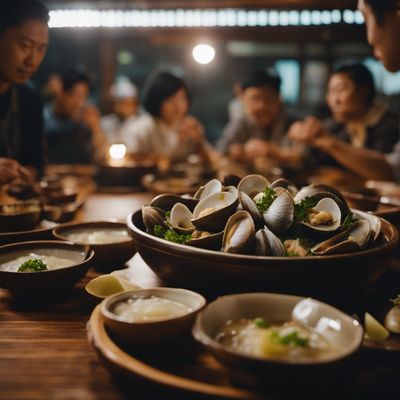
Asari no sakemushi
Steamed Clams with Sake
Asari no sakemushi is a traditional Japanese seafood dish that is made with clams and sake. The dish is typically served as an appetizer and is...


